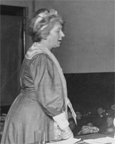
The Women's Social and Political Union (WSPU) was a women-only political movement and leading militant organisation campaigning for women's suffrage in the United Kingdom founded in 1903. Known from 1906 as the suffragettes, its membership and policies were tightly controlled by Emmeline Pankhurst and her daughters Christabel and Sylvia. Sylvia was eventually expelled.

Thomas James Cobden-Sanderson was an English artist and bookbinder associated with the Arts and Crafts movement.
Cobden-Sanderson may refer to:

Adela Constantia Mary Walsh was a British-born suffragette who worked as a political organiser for the Women's Social and Political Union (WSPU) in Scotland. In 1914 she moved to Australia where she continued her activism and was co-founder of both the Communist Party of Australia and the Australia First Movement.
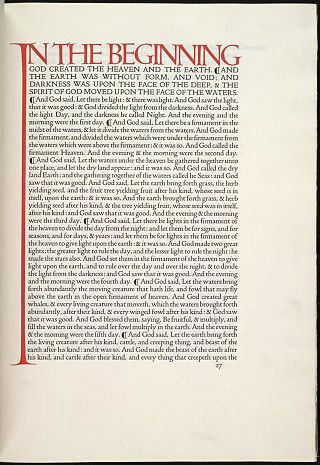
The Doves Press was a private press based in Hammersmith, London. During nearly seventeen years of operation, Doves Press produced notable examples of twentieth-century typography. A distinguishing feature of its books was a specially-devised typeface, known variously as Doves Roman, Doves Press Fount of Type, or simply Doves Type.

Sir Emery Walker FSA was an English engraver, photographer and printer. Walker took an active role in many organisations that were at the heart of the Arts and Crafts movement, including the Art Workers Guild, the Society for the Protection of Ancient Buildings, and the Arts and Crafts Exhibition Society.

Susan Grimes Walker is best known for her long commitment to women's suffrage, and for her involvement in progressive political organizations. In 1923, she became one of the first two women elected to the Massachusetts House of Representatives.
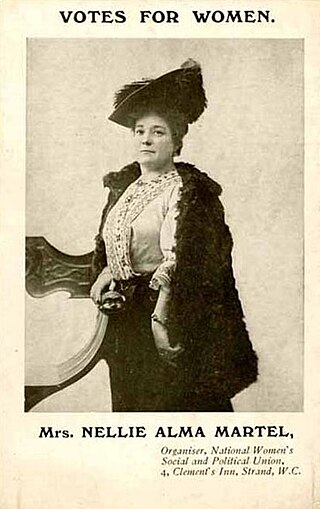
Ellen Alma Martel, was an English-Australian suffragist and elocutionist. She stood for the Senate at the 1903 federal election, one of the first four women to stand for federal parliament.
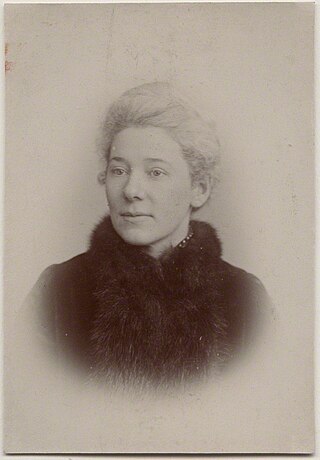
Emma Jane Catherine Cobden was a British Liberal politician who was active in many radical causes. A daughter of the Victorian reformer and statesman Richard Cobden, she was an early proponent of women's rights, and was one of two women elected to the inaugural London County Council in 1889. Her election was controversial; legal challenges to her eligibility hampered and eventually prevented her from serving as a councillor.

Mary Elizabeth Phillips was an English suffragette, feminist and socialist. She was the longest prison serving suffragette. She worked for Christabel Pankhurst but was sacked; she then worked for Sylvia Pankhurst as Mary Pederson or Mary Paterson. In later life she supported women's and children's organisations.

Dorinda Neligan was an Irish born English headmistress and suffragette.

Helen Beatrice de Rastricke Hanson was a British physician, missionary and suffragist.
Lettice Annie Floyd was a British suffragette. She is especially known for her openly lesbian relationship with fellow suffragette Annie Williams. During the suffragette campaign, Floyd and Williams were arrested and force-fed. After World War I, Floyd continued to campaign for women's rights and peace.

Lucy Minnie Baldock was a British suffragette. Along with Annie Kenney, she co-founded the first branch in London of the Women's Social and Political Union.

Lillian Dove-Willcox (1875–1963) was a British suffragette who was a member of Emmeline Pankhurst's personal bodyguard.
Caroline Agnes Isabella Phillips was a Scottish feminist, suffragette and journalist. She was honorary secretary of the Aberdeen branch of the Women's Social and Political Union (WSPU), met and corresponded with many of the leaders of the movement and was also involved in the organisation of militant action in Aberdeen.
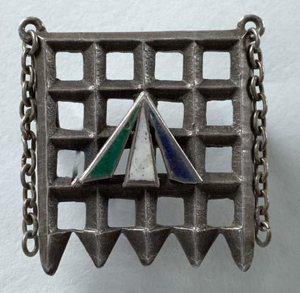
The Holloway brooch was presented by the Women's Social and Political Union (WSPU) to women who had been imprisoned at Holloway Prison for militant suffragette activity. It is also referred to as the "Portcullis badge", the "Holloway Prison brooch" and the "Victoria Cross of the Union".
Rachel McMasters Miller Hunt (1882-1963) was an American bookbinder and book collector, specializing in botanical literature.
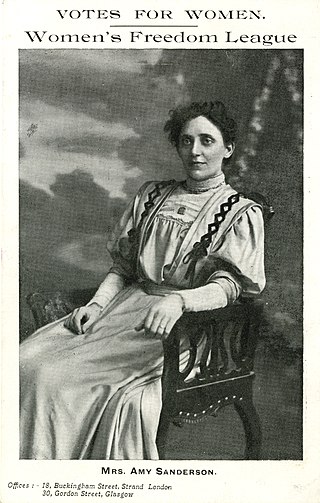
Amy Sanderson née Reid (1876–1931), was a Scottish suffragette, national executive committee member of the Women's Freedom League, who was imprisoned twice. She was key speaker at the 1912 Hyde Park women's rally, after marching from Edinburgh to London, and, with Charlotte Despard and Teresa Billington-Greig, was a British delegate to the 1908 and 1923 international women's congresses.


